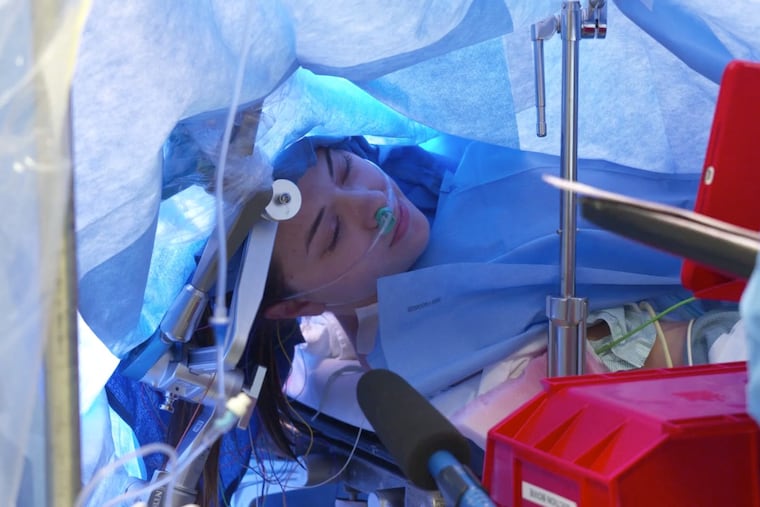Tens of thousands watch woman stream her brain surgery on Facebook while awake
On Tuesday morning, 25-year-old Jenna Schardt underwent brain surgery at Methodist Dallas Medical Center while conscious in order to remove a mass of blood vessels in her brain – and thousands tuned in to watch the procedure live on Facebook.

DALLAS — On Tuesday morning, 25-year-old Jenna Schardt underwent brain surgery at Methodist Dallas Medical Center while conscious in order to remove a mass of blood vessels in her brain – and thousands tuned in to watch the procedure live on Facebook.
A portion of the brain surgery procedure was streamed on Methodist Dallas’ Facebook page starting around 11:45 a.m., narrated by Methodist’s chief of neurosurgery Dr. Nimesh Patel. Patel also took viewers’ questions live.
The live stream began as doctors awoke Schardt from the light anesthesia she was under as her skull was opened up. Schardt was smiling and conscious, talking to doctors for nearly the entire stream, which lasted about 45 minutes.
The procedure was aimed at removing a mass that neurosurgeon Randall Graham said has affected Schardt’s ability to speak and could cause seizures. Schardt discovered the mass after being rushed to the hospital from a North Texas rehabilitation center where she suddenly lost the ability to speak while working.
Occupational therapy, the field in which Schardt is pursuing a master’s degree, requires her to be cognitively present and able to assist stroke patients and others with neurological problems.
“Awake brain surgery is nothing new, it’s been around for years,” Graham said.
It is, however, slightly more common than it used to be, he said. Having the patient awake allows surgeons to test brain function in areas around a lesion or tumor they’re trying to remove so they don’t damage key neurological functions.
“This allows us to test those areas so that we can pick a safer corridor,” Graham said.
The surgery required Graham, along with Dr. Bartley Mitchell and a large operating room team, to open Schardt’s skull. An anesthesiologist put Schardt to sleep slightly for this part of the operation and brought her back to consciousness once her brain was accessible to surgeons.
A technician showed Schardt images and words that she then communicated back to the medical team while Dr. Graham stimulated portions of her brain tissue with electrical signals.
“If I stimulate a spot that controls part of her speech, then her speech will stop … so then I’ll be able to mark that area on the brain’s surface that basically tells us to stay out of the area,” Graham said.
But Schardt couldn’t feel any pain on the surface of her brain, according to Graham.
“The brain surface doesn’t have any pain receptors. The part with all the pain receptors is the scalp, skull and some of the soft tissues surrounding the brain,” Graham said, which is why Schardt was less conscious for that part of the procedure. Doctors also numbed portions of her head and skull throughout the procedure.
“I’m so impressed by her,” Patel said while watching Schardt describe images she saw on an iPad mid-procedure.
Once doctors had mapped the portions of her brain to avoid, they were able to remove the mass of blood vessels causing Schardt trouble. She stayed awake for this process, smiling and carrying on a conversation with medical personnel in the room with her.
The live stream wrapped up with Patel describing the procedure as “close to perfection” while surgeons finished removing the mass from her brain and prepared to put her back under anesthesia to reattach her skull.
The team at Methodist Dallas said during the live stream that they had struggled with the idea of live streaming the procedure, but that Schardt was forthcoming about wanting to remove the misconceptions about brain surgery that she believed stemmed from movies and TV – — and to show how far medical science had come.
To Graham, inviting the public into the operating room said a lot about Schardt’s character.
“She really has this mission, this goal, this sense of obligation to her community to where she really wants to help as many people as possible,” Graham said. “Opening herself to so many people when she’s so vulnerable like this … when she’s awake and when we’re literally in the seat of her soul with her brain open, it just says so much about her.”